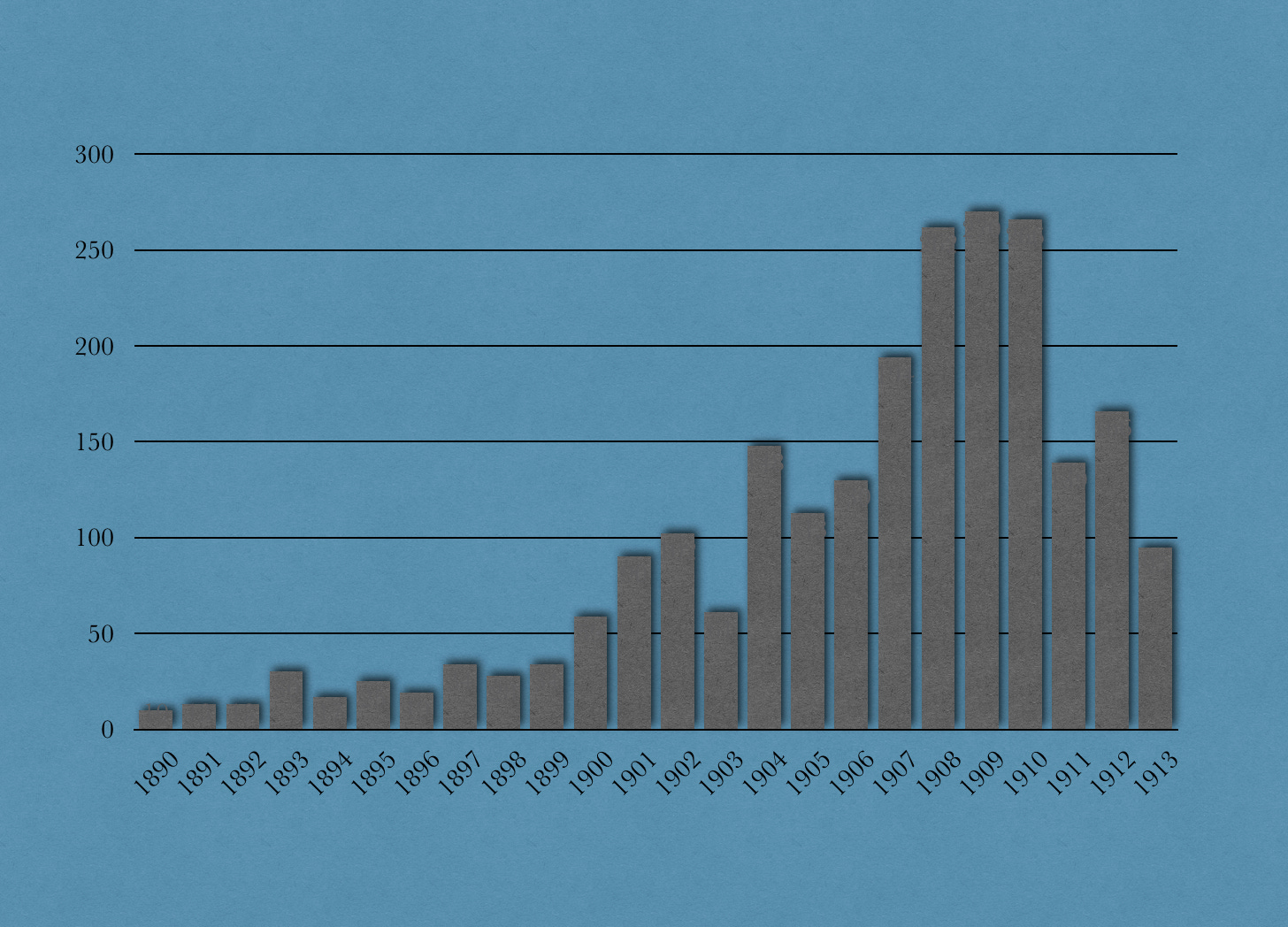Mention of Machine Guns
Between 1890 and 1913
Between 1875 and 1913, Löbell’s Annual Report [Jahresberichte] provided readers with a handy tour d’horizon of the world’s armies.1 These days, it provides military historians with a means of tracking developments in the realms of organization, order-of-battle, and, especially armaments. In particular, the results of key-word searches in back issues of the yearbook give present-day people a rough sense of the evolution of interest in particular ideas, issues, or items of equipment.
In the course of my recent re-engagement with The Social History of the Machine Gun, I looked at the number of times the word “machine gun” appeared in each issue of Löbells Jahresberichte published in the quarter-century leading up to the outbreak of the First World War.2
In most respects, the results correlated with my expectations. Thus, I found nothing remarkable in either the general trend towards increased interest and the spike in interest that took place in the first year of the Russo-Japanese War (1904). I was surprised, however, by the drop in the number of mentions that took place in 1911, 1912, and 1913.
The ‘pre-war dip’ may have resulted from nothing more than the ‘normalization’ of machine guns. That is, such weapons had become so common that discussions of them had lost the ‘man bites dog’ quality that makes for a good story. Similarly, the counter-trend may reflect ‘market saturation’ and, in particular, the fact that all major powers, and many minor ones, had already begun programs to acquire large numbers of machine guns.
For Further Reading:
Share, Subscribe, or Support:
Löbells Jahresberichte suspended publication during the First World War. The annual returned in 1920, under the title of Armament and Disarmament: An Overview of the Military and War Methods of All Countries [Rüstung und Abrüstung; eine Umschau über das Heer, -und Kriegswesen aller Länder].
The figures include appearances of the older German word for such weapons [Mitrailleuse] as well as occurrences of the designation [Maschinengewehr] that would become standard in the twentieth century.










